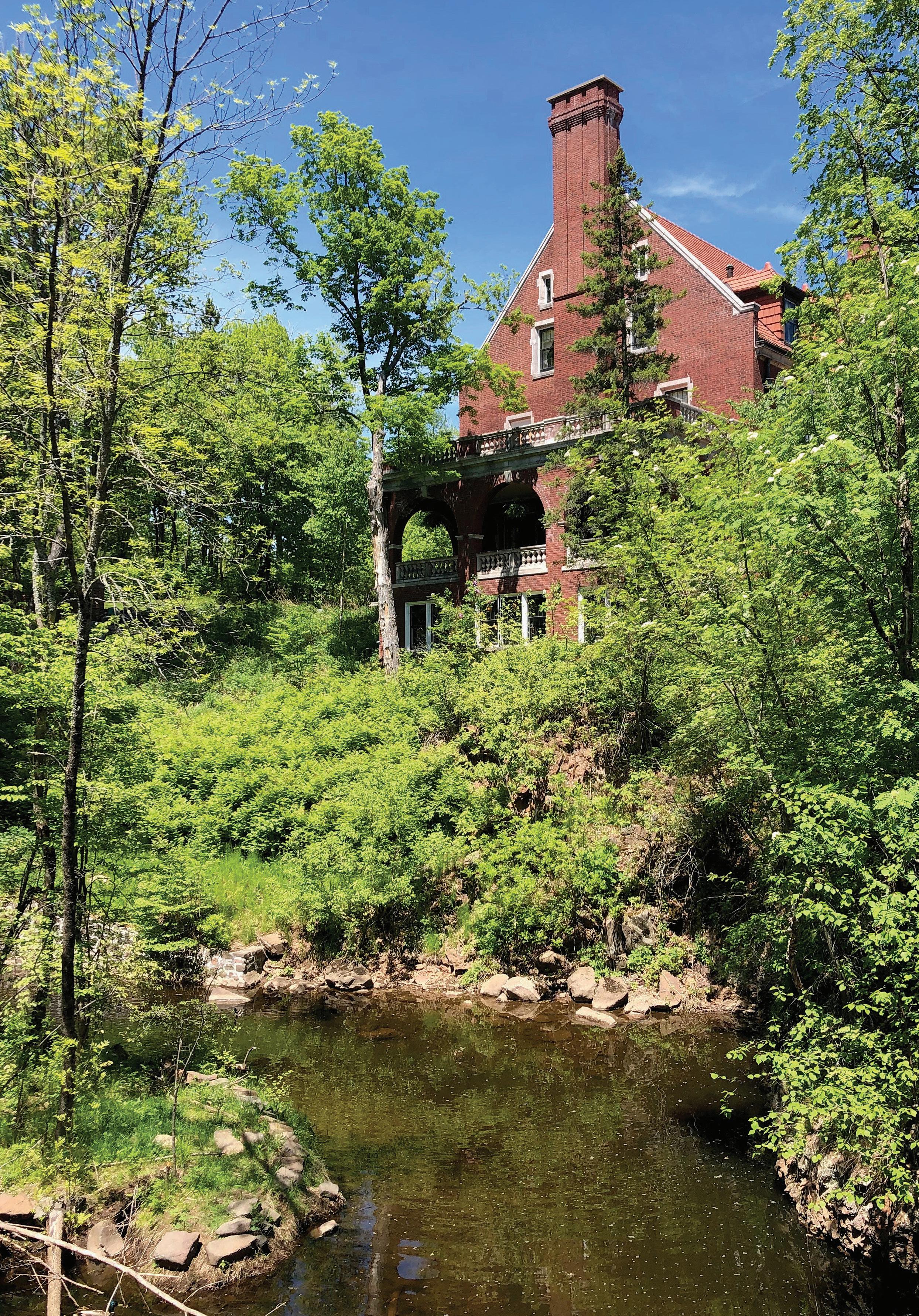
1 minute read
Congdon Park
By Adelie Bergstrom abergstrom@duluthnews.com
Congdon Park takes its name from the green space of the same name, which in turn is named for Chester A. Congdon, the Duluth businessman and mining magnate who built his family’s manor, Glensheen, on London Road.
Glensheen was finished in 1908 at the base of Tischer Creek, where it flows into Lake Superior. After the manor’s completion, Congdon donated land along Tischer Creek from Greysolon Road upstream to Vermilion Road for a city park.
Before the park’s creation, it was well known that many private sewers upstream emptied into Tischer Creek, with the News Tribune suggesting in an 1896 article that water from the creek would be far more dangerous than the city’s hydrant supply.
Congdon’s plan for Glensheen included extensive gardens that would be watered using the creek itself, according to Rob Hedburg of Visit Duluth. As part of the land donation, Congdon asked that the sewer lines be diverted into a septic tank to help keep the creek clean.
With the park’s creation, leaders envisioned the Congdon Park neighborhood as a premier residential district.
“To the end that this beautiful section may be preserved as the most exclusive residence property in the city,” as the News Tribune reported in August 1910, surveyors and landscape architects marked lots of no less than 100 by 150 feet “in a most artistic manner.” The developers attached the condition that only “magnificent homes” be built on the lots.
“The steps have been taken as a means of preserving at least one large area of the city from the contaminating influence of outlying store and other ‘anti-homelike’ spots,” the News Tribune reported.
“No flats, double houses or apartments of any kind will be permitted in the new district.”
Today, the neighborhood runs from 26th Avenue East to about 40th Avenue East and roughly from Wallace Avenue and Snively Road to the lakefront. Congdon Park remains a jewel in the Duluth parks system. The Northland Country Club’s golf course stretches across the district’s northern corner, with mostly single-family homes elsewhere.
The neighborhood has retained its sense of cachet, thanks in part to Glensheen, which today is a museum — though it’s as infamous for being the site where Chester and Clara Congdon’s youngest daughter, Elisabeth, and her nurse were murdered in 1977 as it is for its place in Duluth’s earlier history.










